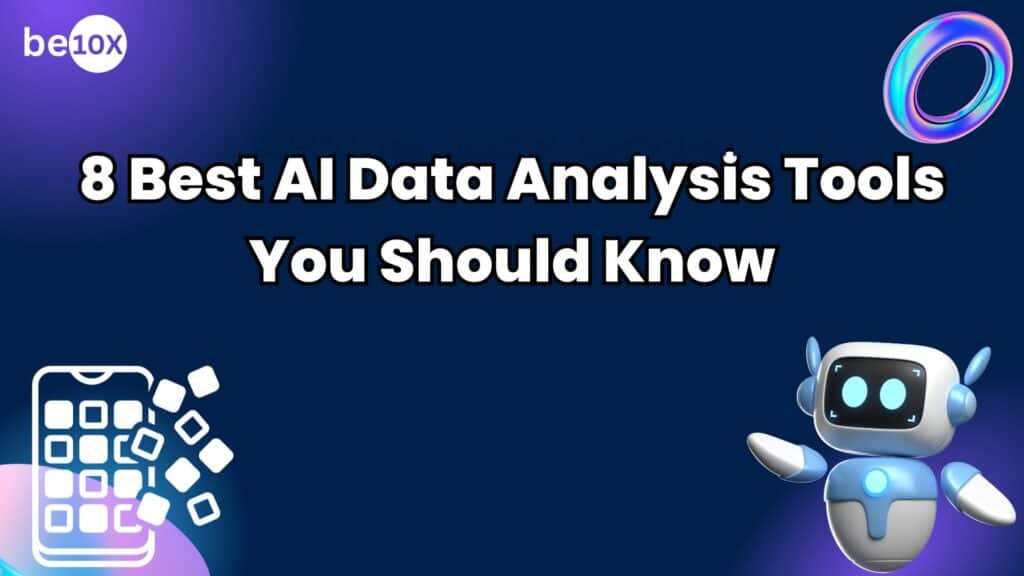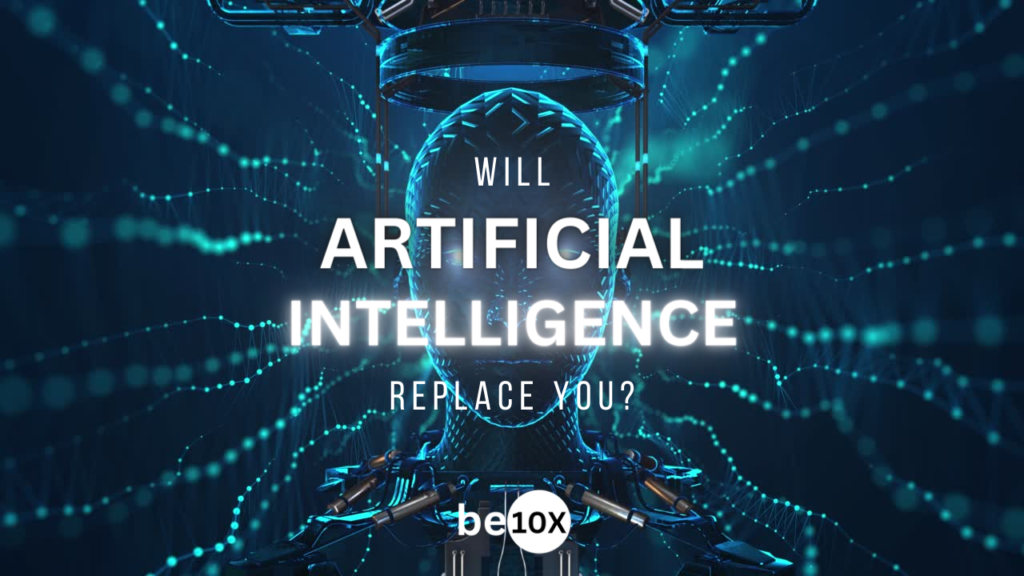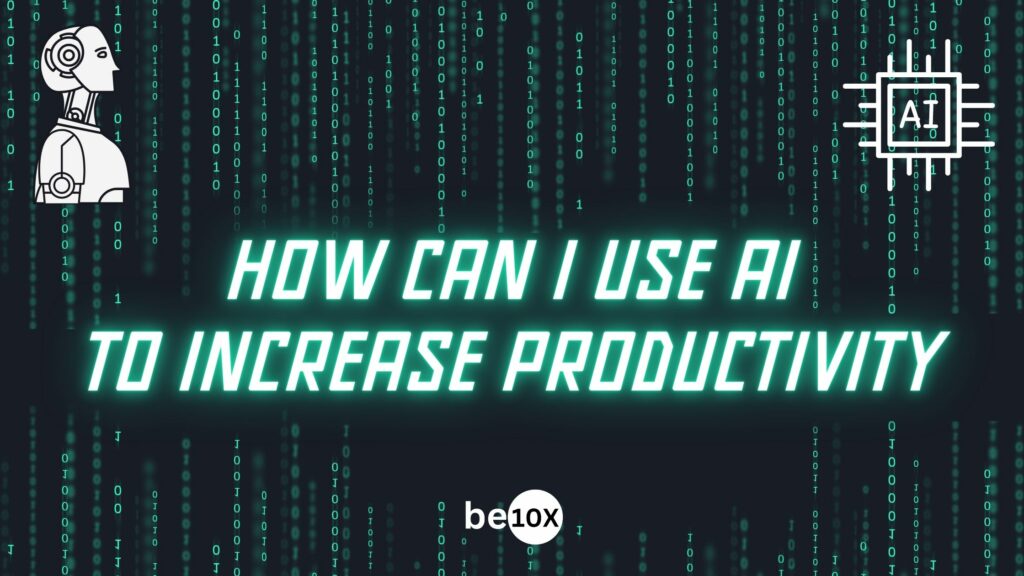In the era of data-driven decision-making, AI data analysis tools play an important role in extracting valuable insights from vast datasets. These technologies make use of artificial intelligence algorithms to evaluate, interpret, and draw conclusions from large and intricate data sets.
AI data analysis tools have revolutionized operations and increased efficiency to the point that it has become vital across sectors. The integration of AI-powered technologies enables organizations to make informed choices, foresee trends, and gain a competitive edge in a variety of industries, including marketing, finance, healthcare, and more. Furthermore, in the next three years, 80% of organizations expect that AI will improve their capacity for data analysis.
Table of Contents
Get enrolled in Be10x Generative AI Tool workshop to learn the best technologies in your professional life.
8 Best AI Data Analysis Tools
In this comprehensive guide, we explore the features, applications, and pros and cons of the eight best AI data analysis tools that are shaping the landscape of data analytics. Here are 8 best AI Data Analysis Tools we will discuss in this article:
- Microsoft Azure Machine Learning
- KNIME
- Google Cloud AutoML
- PyTorch
- DataRobot
- Talend
- H2O.ai
- IBM Watson Analytics

Microsoft Azure Machine Learning
Microsoft Azure Machine Learning (Azure ML) is a cloud-based platform that facilitates the development, deployment, and management of machine learning models. Its user-friendly interface and seamless integration with other Microsoft services make it a powerful tool for data scientists and analysts.
Azure ML boasts a range of features, including automated machine learning, extensive data visualization tools, and collaborative capabilities. Its drag-and-drop interface simplifies model creation, making it accessible to both novices and seasoned data professionals.
From predictive maintenance in manufacturing to fraud detection in finance, Azure ML finds applications across diverse industries. Its flexibility and scalability make it suitable for projects of varying sizes and complexities.
Pros and Cons of Using Microsoft Azure Machine Learning
Here are some of the pros and cons of using Microsoft Azure Machine Learning:
Pros:
- Seamless integration with Microsoft ecosystem
- Automated machine learning for efficiency
- Scalable for large-scale data projects
Cons:
- Learning curve for beginners
- Limited support for non-Microsoft technologies
KNIME
KNIME, short for Konstanz Information Miner, is an open-source platform that enables workflow-based data analysis and integration of machine learning algorithms. Its modular approach allows users to create visual workflows, promoting transparency and reproducibility.
The workflow-centric design of KNIME fosters a clear and organized approach to data analysis. Users can build, modify, and visualize workflows, ensuring a structured and MECE (Mutually Exclusive, Collectively Exhaustive) analysis process. KNIME’s extensive library of machine learning and data mining components facilitates the integration of various algorithms, enabling users to tailor analyses to their specific needs. This flexibility is a key strength for users seeking customization.
Real-world applications of KNIME range from pharmaceutical research to customer segmentation in retail. Case studies illustrate how organizations leverage KNIME to extract actionable insights from their data, showcasing its versatility.
Pros and Cons of Using AI data Analysis Tool KNIME
Here are some of the pros and cons of using KNIME:
Pros:
- Open-source and community-driven
- Modular and customizable workflows
- Suitable for both beginners and advanced users
Cons:
- Steeper learning curve for complex workflows
- Limited in-built machine learning algorithms
Google Cloud AutoML
Google Cloud AutoML simplifies the machine learning process by offering automated machine learning capabilities. This platform is designed for users with varying levels of expertise, enabling them to build high-quality custom machine learning models.
AutoML’s automated features, such as model selection, hyperparameter tuning, and training, streamline the machine learning workflow. This significantly reduces the time and resources required for model development. The seamless integration with Google Cloud Services enhances AutoML’s capabilities, allowing users to leverage powerful cloud infrastructure for their data analysis and machine learning projects.
From image recognition to natural language processing, Google Cloud AutoML finds applications across diverse domains. Its user-friendly interface feature makes AutoML easily accessible to users, irrespective of their varying levels of technical expertise.
Pros and Cons of Using AI data Analysis Tool Google Cloud AutoML
Here are some of the pros and cons of using Google Cloud AutoML:
Pros:
- User-friendly interface
- Automated machine learning for efficiency
- Integration with Google Cloud Services
Cons:
- Limited customization options for advanced users
- Cost considerations for extensive usage
PyTorch
PyTorch, developed by Facebook’s AI Research lab (FAIR), is a powerful open-source deep learning framework. Widely recognized for its flexibility and dynamic computation graph, PyTorch has become a go-to tool for researchers and practitioners in the field of AI. PyTorch’s versatility extends to AI data analysis, where its dynamic computational graph allows for easy experimentation and model iteration. Researchers and data scientists appreciate PyTorch for its ease of use and seamless integration with other Python libraries.
Known for its strong support for neural networks, PyTorch excels in deep learning tasks. Its dynamic graph construction makes it well-suited for projects that require a high degree of customization and experimentation.
In comparison to TensorFlow, another popular deep learning framework, PyTorch’s dynamic nature offers advantages in terms of model debugging and flexibility. Researchers often choose PyTorch for its intuitive syntax and Pythonic approach. Examples of PyTorch in action include image classification, natural language processing, and reinforcement learning. Its community-driven development ensures a steady stream of resources and support for users.
Pros and Cons of Using AI data Analysis Tool PyTorch
Here are some of the pros and cons of using Pytorch:
Pros:
- Vibrant and active community
- Dynamic computational graph allows for more flexibility
- Accessible for both beginners and experienced developers
Cons:
- Steeper learning curve when working on complex projects
- Fewer built-in models and pre-trained networks
DataRobot
DataRobot is an automated machine learning platform that empowers users to build and deploy machine learning models without extensive coding. Its user-friendly interface and automation capabilities make it accessible to a broad audience. DataRobot’s key features include automated model selection, hyperparameter tuning, and feature engineering. The platform guides users through the machine learning process, from data preparation to model deployment.
DataRobot’s applications extend to predictive analytics, where organizations leverage its automated capabilities to forecast trends, make data-driven decisions, and gain a competitive advantage. Success stories highlight how DataRobot has transformed industries, from finance to healthcare. The platform’s ability to democratize machine learning empowers organizations to harness the power of data without the need for extensive technical expertise.
Pros and Cons of Using DataRobot
Here are some of the pros and cons of using DataRobot:
Pros:
- User-friendly interface
- Automated machine learning for efficiency
- Broad applicability across industries
Cons:
- Limited customization options for advanced users
- Dependency on the quality of input data
Talend
Talend is an open-source data integration platform that facilitates the seamless flow of data across organizations. Its user-friendly interface and robust integration capabilities make it a valuable asset for data-driven organizations. Talend’s strength lies in its ability to process and integrate data from diverse sources. Its modular design and pre-built connectors simplify the integration process, ensuring a smooth flow of information.
In the realm of AI-driven data analysis, Talend plays a crucial role in ensuring
the availability of clean, accurate, and well-integrated data. Its data processing capabilities contribute to creating a solid foundation for subsequent AI analysis. Real-world case studies showcase Talend’s effectiveness in diverse applications, from streamlining data migration in e-commerce to enabling real-time analytics in healthcare. Organizations leverage Talend to overcome data integration challenges and enhance their analytical capabilities.
Pros and Cons of Using AI data Analysis Tool Talend
Here are some of the pros and cons of using Talend:
Pros:
- Open-source and community-driven development
- Powerful data integration capabilities
- User-friendly interface for data professionals
Cons:
- Learning curve for complex integration scenarios
- Talend has only a few advanced analytics features as compare to other tools
H2O.ai
H2O.ai is an open-source machine learning platform designed for data scientists and analysts. Known for its simplicity and scalability, H2O.ai facilitates the development and deployment of machine learning models. Being open source, H2O.ai provides transparency and flexibility for users. Its collaborative development environment allows data scientists to work seamlessly and share insights across projects.
H2O.ai finds applications in data analysis and modeling across various industries. Its algorithms support tasks such as classification, regression, clustering, and anomaly detection, making it versatile for different use cases. Further, Positive user experiences highlight H2O.ai’s ease of use, quick model development, and the availability of a wide range of algorithms. Users highly praise H20.ai’s ability to deal efficiently with large datasets.
Pros and Cons of Using AI data Analysis Tool H2O.ai
Here are some of the pros and cons of using H2O.ai:
Pros:
- Open-source and transparent
- Scalable for large datasets
- Supports a variety of machine learning tasks
Cons:
- It may have a difficult learning curve for newbies
- Limited in-built visualization features
IBM Watson Analytics
IBM Watson Analytics is a cognitive computing platform that combines artificial intelligence and advanced analytics. Designed for business users, it empowers individuals to explore and analyze data without the need for extensive technical expertise.
With cognitive computing capabilities, IBM Watson Analytics goes beyond traditional analytics by understanding natural language queries and providing insights in a user-friendly manner.
IBM Watson Analytics has found applications in diverse industries, including retail, healthcare, and finance. Success stories showcase how businesses leverage their capabilities to gain actionable insights and drive innovation. Further, Watson Analytics stands out for its intuitive interface, natural language processing, and advanced analytics features. Users appreciate its ability to simplify complex data analysis tasks.

Pros and Cons of Using IBM Watson Analytics
Here are some of the pros and cons of using IBM Watson Analytics:
Pros:
User-friendly interface for business users
Cognitive computing capabilities
Advanced analytics features
Cons:
May have limitations for advanced data scientists
Dependency on the quality of input data
Considerations for Choosing the Right AI Data Analysis Tool
When choosing the right AI data analysis tool for your specific needs, several considerations should guide your decision-making process. Firstly, assess the scalability of the tool to ensure it can handle the volume and complexity of your data. Consider the ease of integration with existing systems and compatibility with the data formats you commonly work with. Evaluate the learning curve associated with each tool, as a user-friendly interface can expedite adoption and implementation.
Additionally, consider the support and community around the AI data analysis tool, as robust documentation and an active user community can be invaluable for troubleshooting and continuous improvement. Cost considerations, including licensing fees and scalability pricing models, should also factor into your decision.
Lastly, align the tool’s features and capabilities with the specific requirements of your projects, whether it be automated machine learning, deep learning capabilities, or specialized data integration functionalities. Taking a comprehensive approach to these considerations will enable you to select the AI data analysis tool that best aligns with your organizational goals and project requirements.
Future Trends in AI Data Analysis Tools
As technology continues to evolve, the future of AI data analysis tools is likely to see advancements in areas such as interpretability, automation, and integration with emerging technologies like blockchain and edge computing. Explainable AI (XAI) is emerging as a key focus, addressing the need for transparency in decision-making processes. Edge AI is gaining prominence, facilitating real-time processing by deploying AI models directly on edge devices. AutoML platforms are democratizing machine learning, making it accessible to individuals with limited expertise.
The convergence of AI with Natural Language Processing (NLP) is set to redefine textual AI data analysis tools, while Privacy-Preserving AI Techniques ensure the security of sensitive data. Additionally, AI-driven Data Governance and Quality Assurance are becoming integral, emphasizing the importance of reliable datasets. Staying abreast of these trends is imperative for organizations looking to harness the full potential of AI in data analysis.
Be10x: The Best AI tool and ChatGPT Course
Be10x offers an unparalleled learning experience with its AI tool and ChatGPT workshop. As a leading online course provider, Be10x stands out for its commitment to excellence in AI education. The AI tool workshop provides participants with hands-on training on cutting-edge technologies such as ChatGPT, Microsoft Azure Machine Learning, KNIME, and Google Cloud AutoML, ensuring a comprehensive understanding of the industry’s best practices.
The ChatGPT workshop, designed to enhance natural language processing skills, leverages the capabilities of OpenAI’s ChatGPT, enabling participants to explore and implement advanced conversational AI techniques. With a focus on practical, real-world applications, Be10x empowers learners to navigate the intricacies of AI tools and ChatGPT, fostering expertise in an ever-evolving technological landscape.
Enroll in Be10x AI Tool workshops for a transformative learning journey at the forefront of artificial intelligence education.
Conclusion
In summary, the landscape of AI data analysis tools is diverse, with each tool offering unique features and capabilities. Microsoft Azure Machine Learning, KNIME, Google Cloud AutoML, PyTorch, DataRobot, Talend, H2O.ai, and IBM Watson Analytics cater to different needs and preferences in the data analytics domain.
If you want to learn the various applications of AI tools, get enrolled in Be10x Generative AI workshop now.



